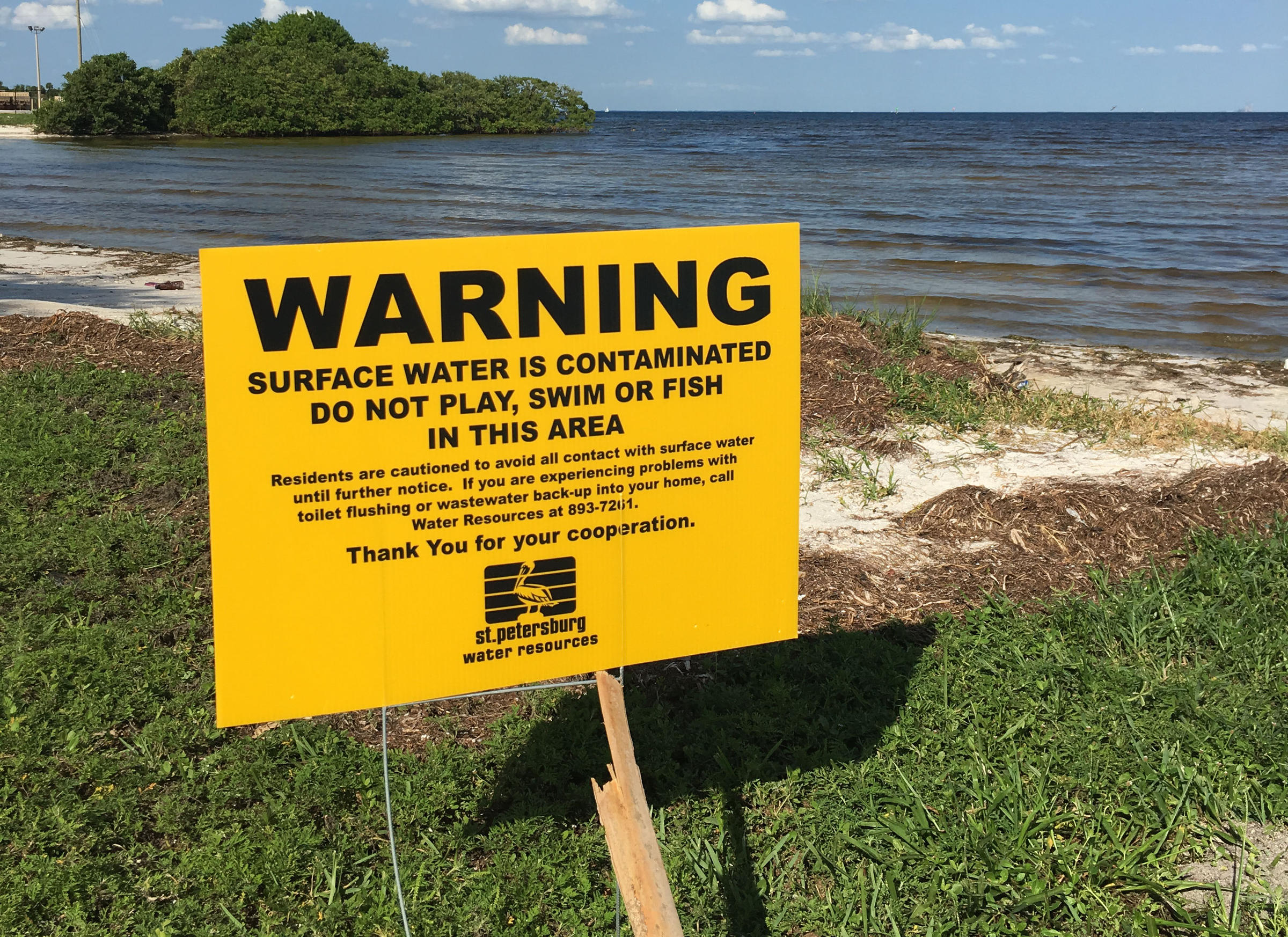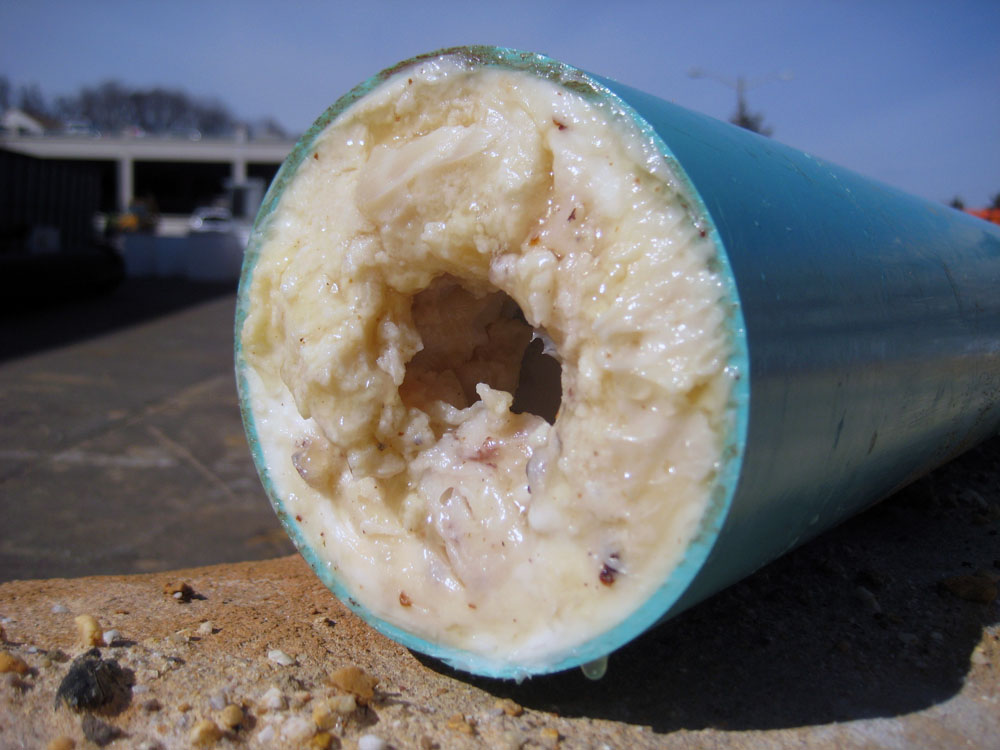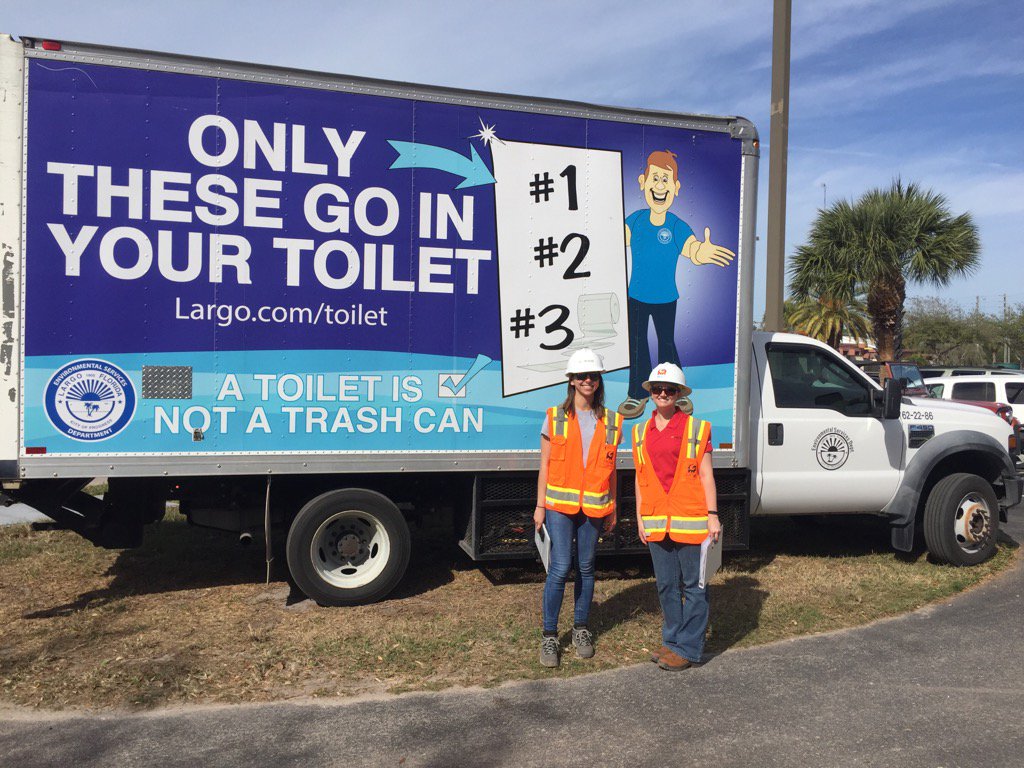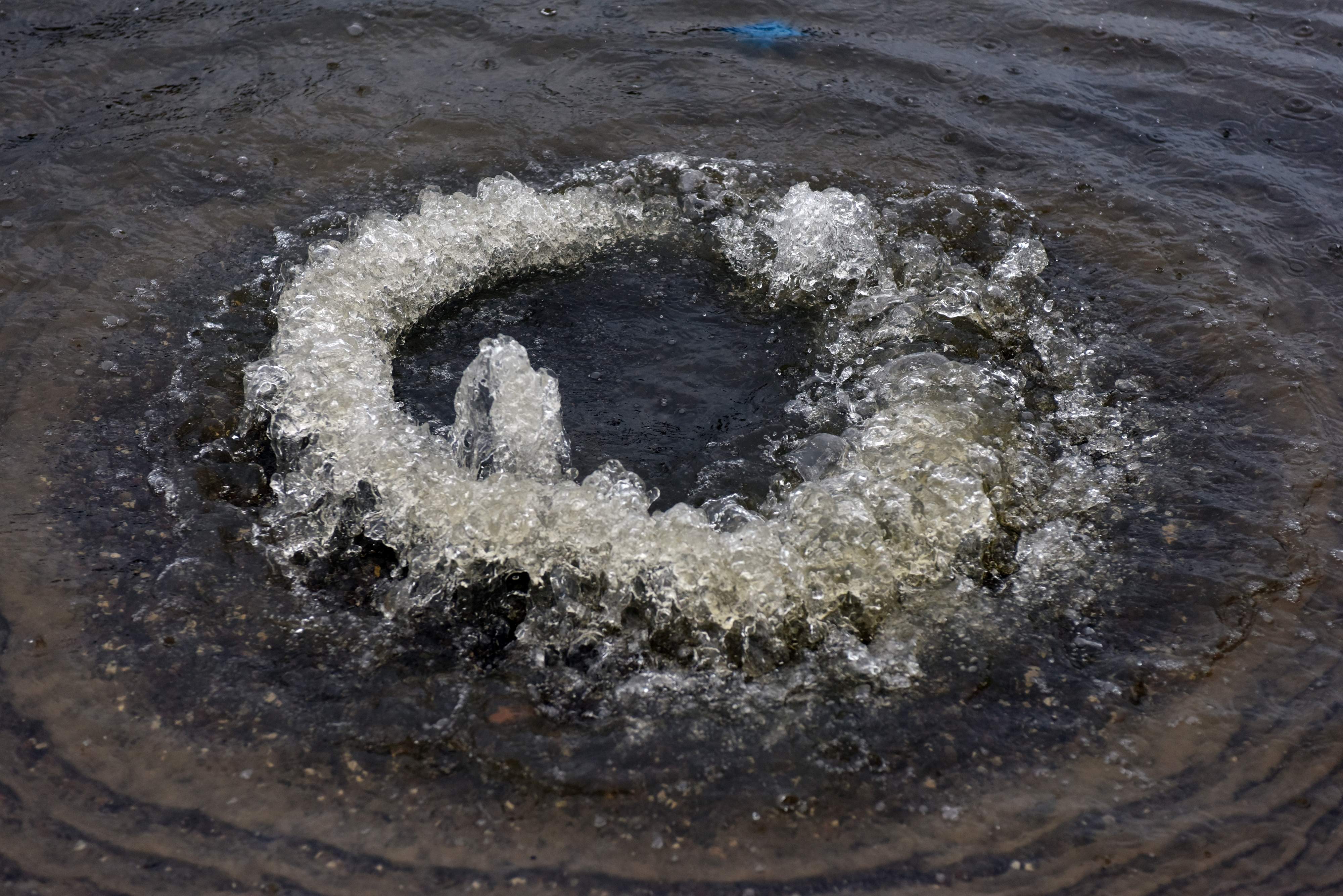WW-5
Reduce the occurrence of sanitary sewer overflows to the bay
OBJECTIVES:
Encourage proper operation, maintenance and replacement of deteriorating and failing sanitary sewer infrastructure owned by utilities and private property owners. Encourage and support efforts to reduce groundwater and stormwater inflow and infiltration to sanitary sewer systems. Support local government capacity to gain adequate funding for needed capital improvement projects. Encourage communication, coordination and cooperation among regional utilities. Support public education and outreach about best practices for proper use and maintenance of privately-owned lateral sanitary sewer infrastructure (i.e., pipes connecting homes and businesses to municipal lines).
STATUS:
Ongoing. Previously Action PH-1, this action is updated to incorporate new information about operation, maintenance and replacement of sanitary sewer infrastructure in the Tampa Bay watershed. It includes new information about efforts to improve communication, coordination and cooperation among regional utilities and a public education component.
BACKGROUND:
Sanitary sewer systems are closed, underground conveyances designed to collect and transport domestic, commercial and industrial wastewater to centralized wastewater treatment plants (WWTPs). Occasionally, sanitary sewers can overflow and release untreated sewage into the environment — potentially contaminating surface waters and sediments and threatening public health. Reducing the occurrence of sanitary sewer overflows (SSOs) is important to maintaining and improving water quality in Tampa Bay.

Sanitary sewers can overflow for a number of reasons, including improper design and capacity, aging infrastructure, line blockages and breaks, infiltration and inflow of stormwater, and equipment and power failures. Compound flooding from extreme rainfall events and sea level rise is projected to result in more frequent SSOs in the Tampa Bay watershed (Meyers et al. 2021). Addressing these challenges through proper operation and maintenance, capital improvement projects, education and enforcement will help reduce the incidence of sanitary sewer overflows.
While initial design and construction problems can underlie some SSOs, it is more common for ongoing urban development to exceed original system capacity and lead to overflows. Solutions include retrofitting existing systems with additional pipes, bigger interceptors, reduced wet weather infiltration and inflow, more underground storage or additional WWTP treatment capacity.
Wastewater systems in the Tampa Bay area are showing their age. This is particularly true in older urban areas like the cities of St. Petersburg and Tampa. The City of Tampa launched the Progressive Infrastructure Planning to Ensure Stability (PIPES) program in 2017 with a goal to replace 20 miles of water lines and 30 miles of sewage pipes each year. Tampa also completed more than $15 million in maintenance projects at the Howard F. Curren Advanced WWTP. Another $36 M in facility improvements are either under construction, in design or planned. Elsewhere, Hillsborough County is retiring two aging WWTPs and consolidating treatment at the Northwest Regional Water Reclamation Facility to improve treatment efficiency and reduce power use.

Pipes can deteriorate and fail over time, especially those made from older, degradable materials like clay or Orangeburg — made of layers of wood pulp and pitch. For example, the volume of wastewater conveyed per person per day in Pinellas County is significantly higher in the South County system, where many pipes are made of vitrified clay, compared to the North County system, where the majority of pipes are made of PVC. This is likely due to the amount of infiltration and inflow entering via defects in the sanitary sewers. Between 2012 and 2015, Pinellas County completed 26 wastewater projects to reduce pollutant loading or SSOs at a cost of $7.6 M. Another seven projects totaling $16.4M are ongoing.
The City of Tampa has replaced pipes constructed of ductile iron that have failed due to corrosion, with new PVC pipes. Other infrastructure, including pumps, check valves and other moveable parts can also wear out, leading to mechanical failure. Older electric equipment or even lighting strikes can cause electrical failures at lift stations.
Blockages can occur due to tree roots entering sanitary sewer systems through defects, breaks or cracks. They can also be caused by improper disposal of items into sanitary drains, including fats, oils and grease (FOG), baby wipes, new ‘flushable wipes’ and sanitary products. According to the City of Tampa, the number one cause of sewer overflows in the city is grease blockages. Tampa adopted a Grease Management Ordinance in 2006 to regulate the disposal of grease by grease haulers and food facilities. The city also provides outreach and education to the public about ways residents can keep improper items out of the sewer system.

Breaks and blockages can also contribute to added hydraulic stress on other parts of the system and produce a series of cascading failures down the line. Solutions to aging infrastructure and blockages include routine maintenance, cleaning and rehabilitation or replacement. A variety of leak detection technologies are available, including filling sections of pipe with smoke to help visualize breaks or using video cameras. There are newer, cheaper technologies (e.g., sonar) that can assist a utility in determining where to expend cleaning resources. Other “trenchless” technologies make repairs and rehabilitation easier, less expensive and cause less disturbance to the above-ground area.
Many utilities in the Tampa Bay area have aggressive programs to replace older, deteriorating infrastructure. For example, Tampa invested $44 M to upgrade two master lift stations to improve wet-weather operations. Hillsborough Basin Management Action Plan (Hillsborough River Basin Working Group 2009; Florida Department of Environmental Protection 2016) participants committed to implement over 75 bacteria reduction projects, 45 of which were categorized as “wastewater infrastructure management” projects. Hillsborough County lined 214,000 feet of pipe with slip lining at a cost of $10 M, and the City of Largo invested $100 M for a new wet-weather force main. Pipes connecting homes and businesses to the municipal sewer system (private laterals) require similar attention, but are often neglected by property owners.
TBEP launched the Pipe Up behavior change campaign in 2021 to encourage homeowners and homebuyers to inspect, repair, or replace aging private lateral sewer lines to prevent sanitary overflows into Tampa Bay and its watershed (Marketing for Change 2022). The campaign featured animated video and advertisements on Realtor.com, Facebook, and Instagram targeting home inspectors and homebuyers in the market for homes built before 1975. The next phase will continue in 2024.
Sanitary sewers in the Tampa Bay Area were not designed to transport groundwater and stormwater. Backups and overflows can occur when excessive amounts of groundwater and/or stormwater enter and overwhelm system capacity. This can result in sewage backups into homes, spills from manhole covers or lift stations or emergency discharges at WWTPs. Infiltration occurs when groundwater enters sanitary sewer systems through defective, permeable or broken pipes. Inflow occurs when stormwater enters the sanitary system through unauthorized connections (e.g., yard and roof drains, and submersible pumps). Sanitary sewer overflows due to inflow and infiltration are most commonly associated with rainstorms.

For example, unusually heavy rains in summer 2015 overwhelmed the City of St. Petersburg’s sanitary sewer system, and forced the city to discharge 31 million gallons of treated and untreated wastewater into Clam Bayou and Tampa Bay. The storm-related incident was compounded, in part, by loss of system capacity when the Albert Whitted WWTP was closed months earlier. Making matters worse, some homeowners associations, businesses and individual residents piped water out of flooded areas into the City’s sanitary sewers.
In retrospect, some overflows and releases due to the storm may have been avoidable if comprehensive system-wide action plans had been in place specifying emergency responses (similar to oil spill response plans), and if additional conveyance and storage capacity in neighboring utilities’ systems were made available. In Fall 2015, the Florida Department of Environmental Protection (FDEP) began convening regular meetings of regional utilities to improve communication, coordination and cooperation among them. One goal is to explore opportunities for cooperative resource and capacity-sharing among utilities during heavy storms or other emergencies.
Solutions to reducing inflow and infiltration include regular inspection, rehabilitation and maintenance of broken, failing infrastructure. For example, leaky manhole covers can be made less susceptible to stormwater leaks by sealing them with manhole inserts. Rigorous construction inspections can assist in identifying and preventing illicit connections to sanitary sewer systems.
The City of St. Petersburg will invest more than $300 million in improvements to its wastewater treatment system through the year 2021 – including additional deep injection wells to dispose of treated wastewater during heavy rain events, expansion of the city’s three remaining WWTPs, and lining or sealing of targeted pipes and manholes.
Equipment failures and lack of backup power can also cause overflows. Regular inspections and maintenance are important preventative measures. For example, Tampa installed emergency generators at some of its pump stations.
Climate change will further strain aging wastewater infrastructure. Anticipated changes in storm intensity may escalate inflow and infiltration leading to more frequent sewer overflows and emergency releases. Rising sea levels and associated changes to groundwater may increase infiltration, corrode infrastructure and alter the effectiveness of wastewater treatment. As a result, climate change risks should be considered when planning new wastewater infrastructure. For example, planners may consider locating new wastewater treatment plants away from future surge and flood-prone areas and consider increasing capacity to accommodate anticipated increases in inflow and infiltration during more intense storms. Community resilience planning is underway in several municipalities in the bay watershed.
The University of South Florida developed a model to forecast the likelihood of future sanitary sewer overflows (SSOs) and help utility operators plan for future climate scenarios with intense storm events (Meyers et al. 2021). Researchers created an interactive dashboard to demonstrate SSO probabilities under both past and potential future conditions. Simulations suggest Tampa Bay can expect weather related SSOs an average of 5-7 days per year with a 0.5 m rise in sea level.